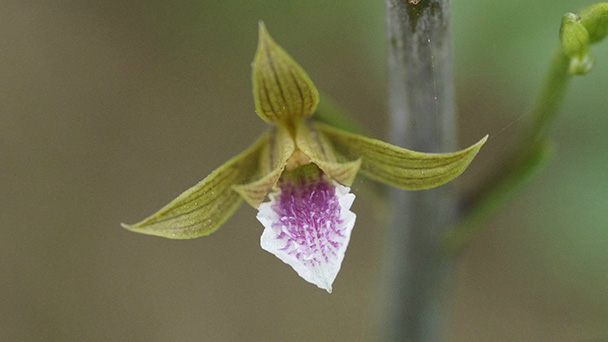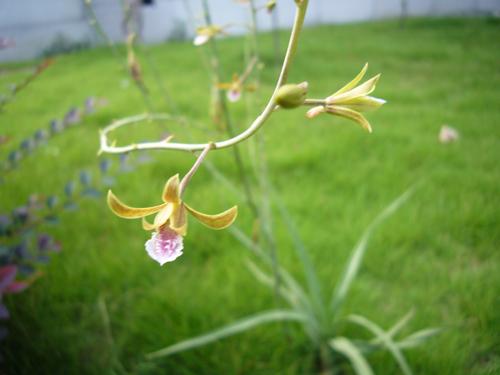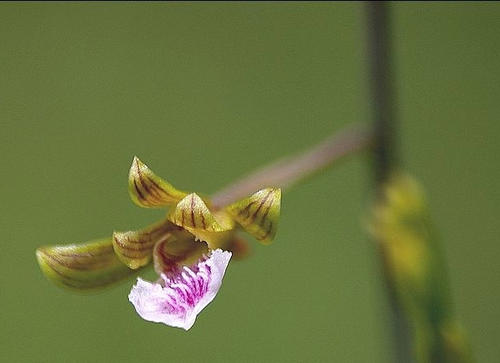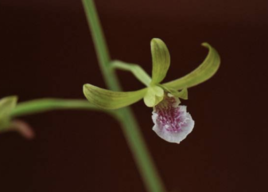The breeding methods and precautions of Eulophia graminea
Written by Maggie
Nov 20 2020

During the cultivation of Eulophia Graminea, loose and fertile sandy soil rich in humus was selected as the culture soil. During the growth period, the temperature was controlled to be about 15 ~ 30℃. When the temperature was higher than 35℃, water was sprayed to cool the soil.
Eulophia Graminea picture

The farming methods of Eulophia Graminea
1. Matrix requirements
Eulophia graminea likes to grow in a humus-rich, well-drained matrix condition. When potted, put some broken tiles in the basin and then cover it with a layer of sand. Add an appropriate amount of coarse grained soil and a small amount of humus-rich sandy soil to stir it, and spray the soil with an appropriate amount of potassium permanganate solution for disinfection before planting.
2. Environmental requirements
Eulophia Graminea likes to grow in an environment with long sunshine time, and it has strong shade resistance and is free from sun exposure. Generally, it is suitable for growth in a climate of 15 ~ 30℃. If the temperature is lower than 5℃, it will not grow well, and then it should be moved indoors timely.
3. Water properly
Eulophia graminea likes to grow in a moist stroma, but avoid standing water. Water the pot sufficiently during spring and summer to keep the soil moisture at about 80%, preferably once a day. In addition, keep the leaves moist often when watering to help keep them clean, and pour in warm water in winter to avoid frostbite on the roots.
4. Fertilize regularly
Proper fertilization is one of the breeding methods and precautions for Eulophia graminea. During the growth period, application of fertilizer was mainly made of rotted farmyard fertilizer. For vigorous plants, it is best to apply a thin liquid fertilizer every 10 to 15 days, mainly organic fertilizer.

Notes for breeding Eulophia Graminea
During the growth of Eulophia graminea, it is likely to suffer from sheathing rust, blight and anthrax, which mainly affected the leaves and stems. During the onset of the disease, the plants would gradually wither and die. In the early stage, ventilating should be paid attention to, and the diseased plants should be cut off and burned in time, and the corresponding Bordeaux liquid or zinc daisen powder should be used for spraying prevention and control.

Latest Updated
- Benefits of Bugleweed - 7 Science-backed Health Benefits
- Bugleweed Dangers & Side Effects - Is It Poisonous?
- How to Plant Evergreen Trees - What You Should Know
- When to Plant Evergreens - Grow Guide for Evergreen Trees
- 12 Wonderful Evergreen Shrubs for Your Garden
- 12 Popular Evergreen Plants with Pictures for Beginners
- When And How To Prune A Lilac Bush Like a Pro
- How to Grow & Care for Lilac Vine (Hardenbergia Violacea)
- Japanese Lilac Tree (Syringa Reticulata) Care & Propagation Guide
- Shumard Oak Pros and Cons - What to Know
Popular Articles
- Winter maintenance of Antirrhinum Majus
- How to Grow Terminalia Mantaly Tree
- How to Grow and Care for Crossostephium Chinense
- How to grow Antirrhinum Majus in spring
- Peristeria Elata (Dove Orchid) Profile: Info & Care Guide
- Underwatered Snake Plant (Sansevieria Trifasciata) - Signs And How To Fix
- How to Care for Brazilian Jasmine Plant (Mandevilla Sanderi)
- How to Grow & Care for Graptopetalum Purple Delight in Summer
- Rosa Chinensis (China Rose): Plant Growing & Care Tips
- How to Care for Baby Sun Rose (Aptenia Cordifolia)